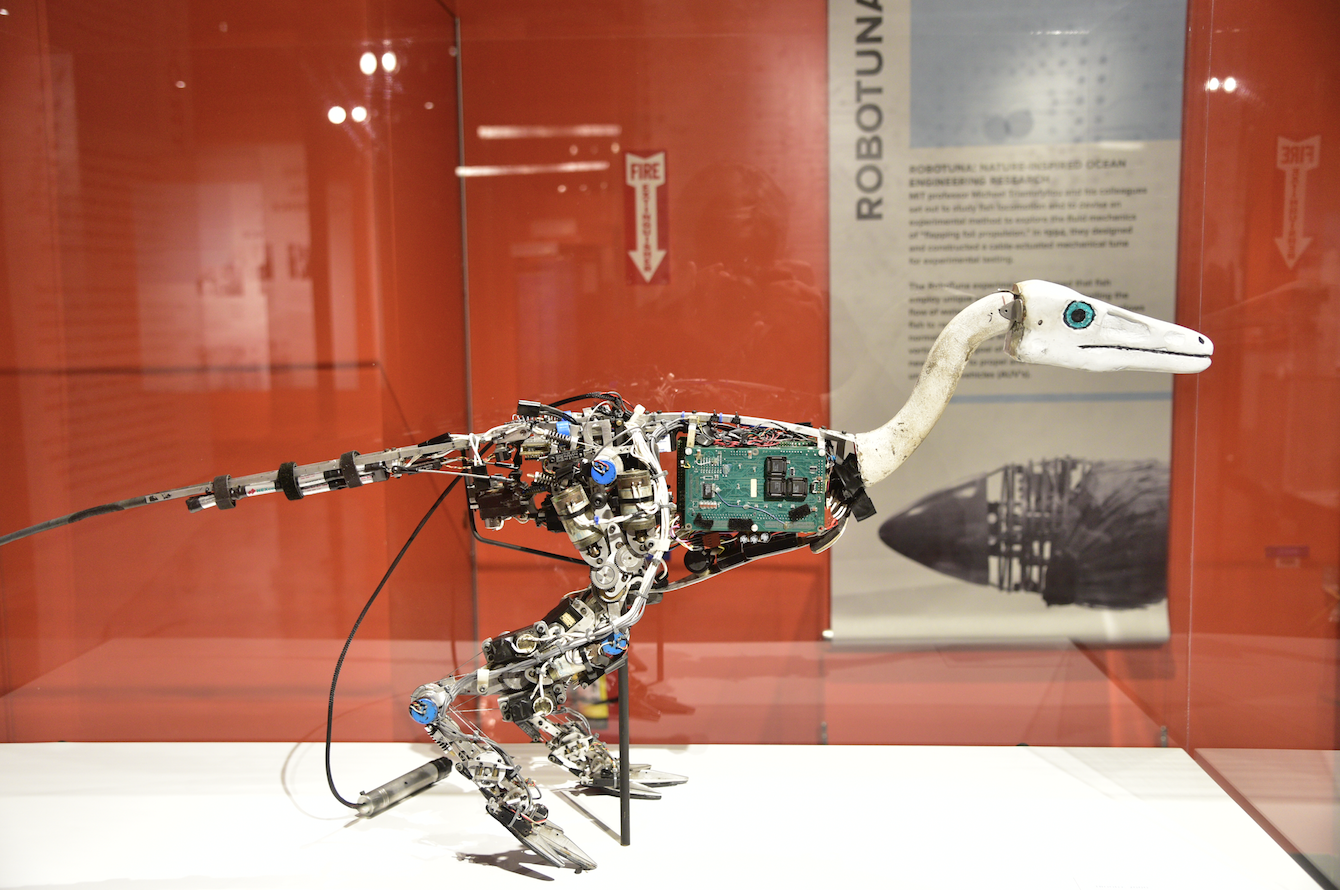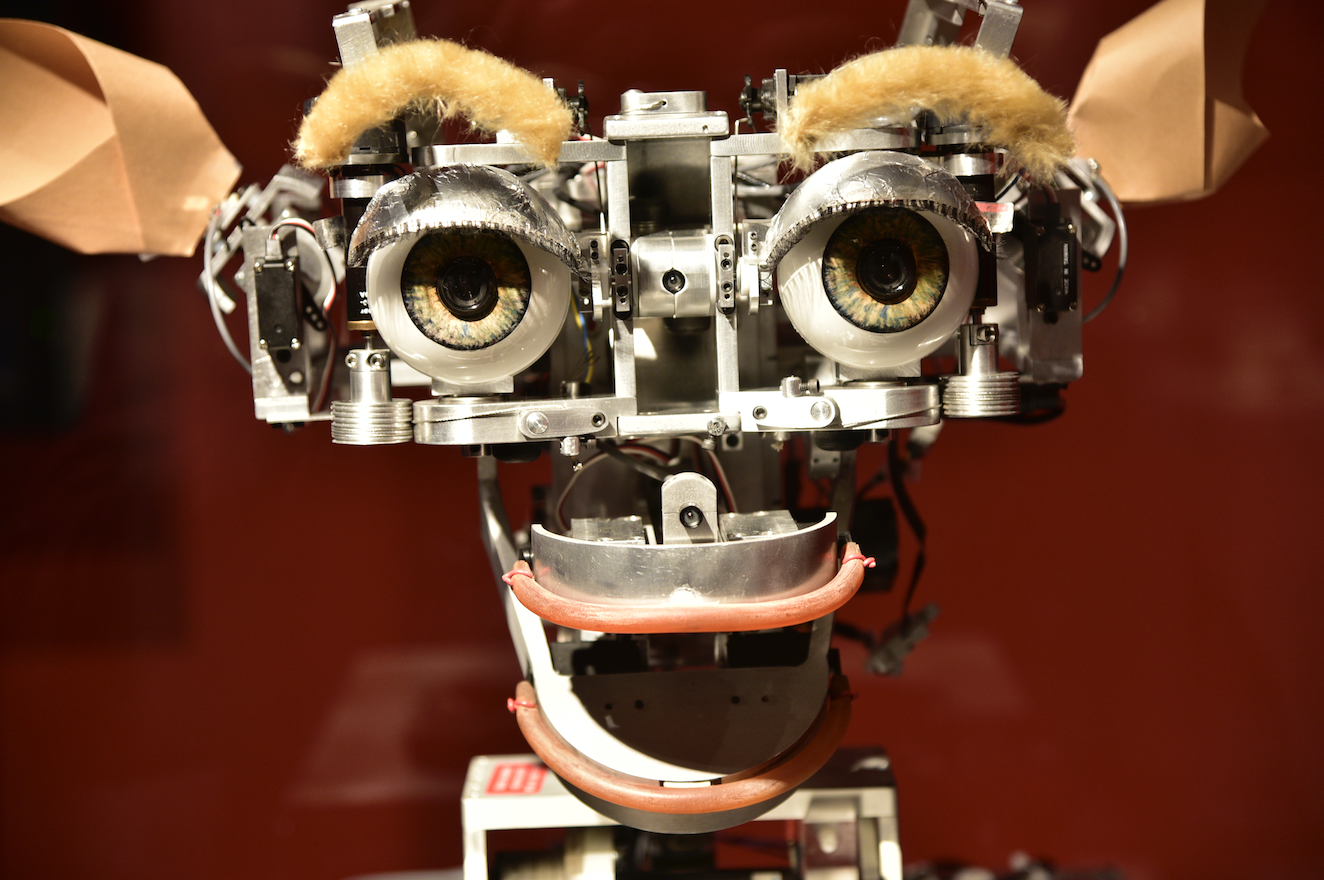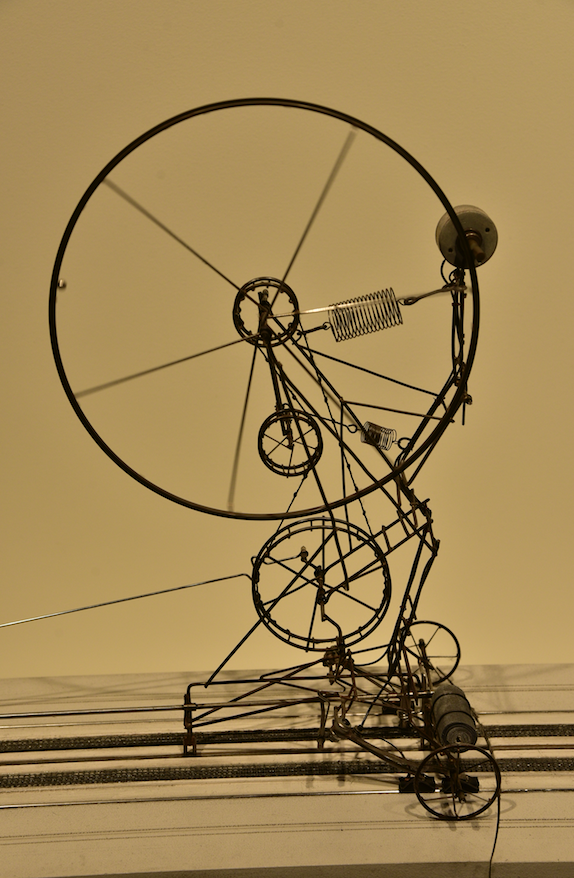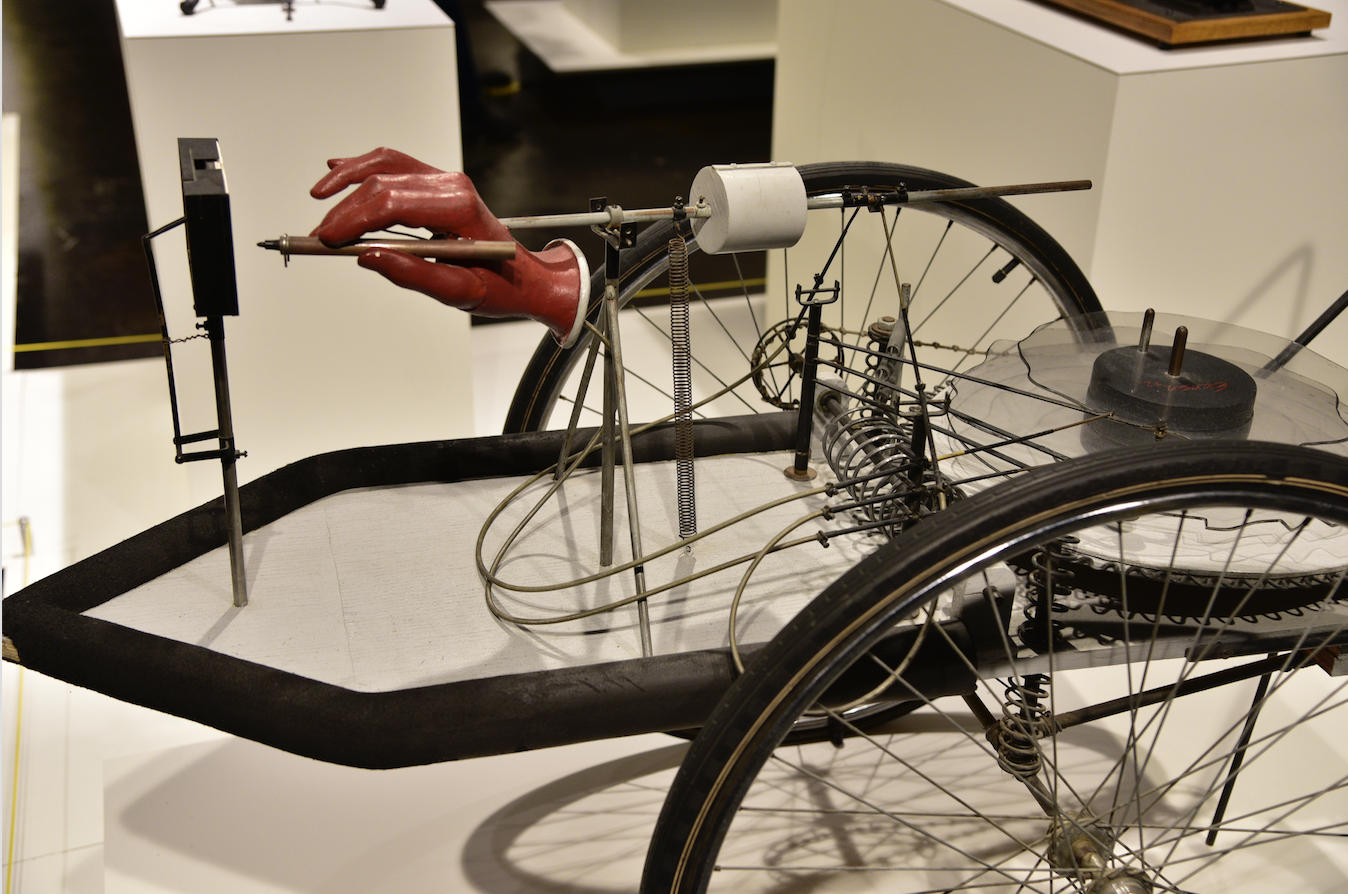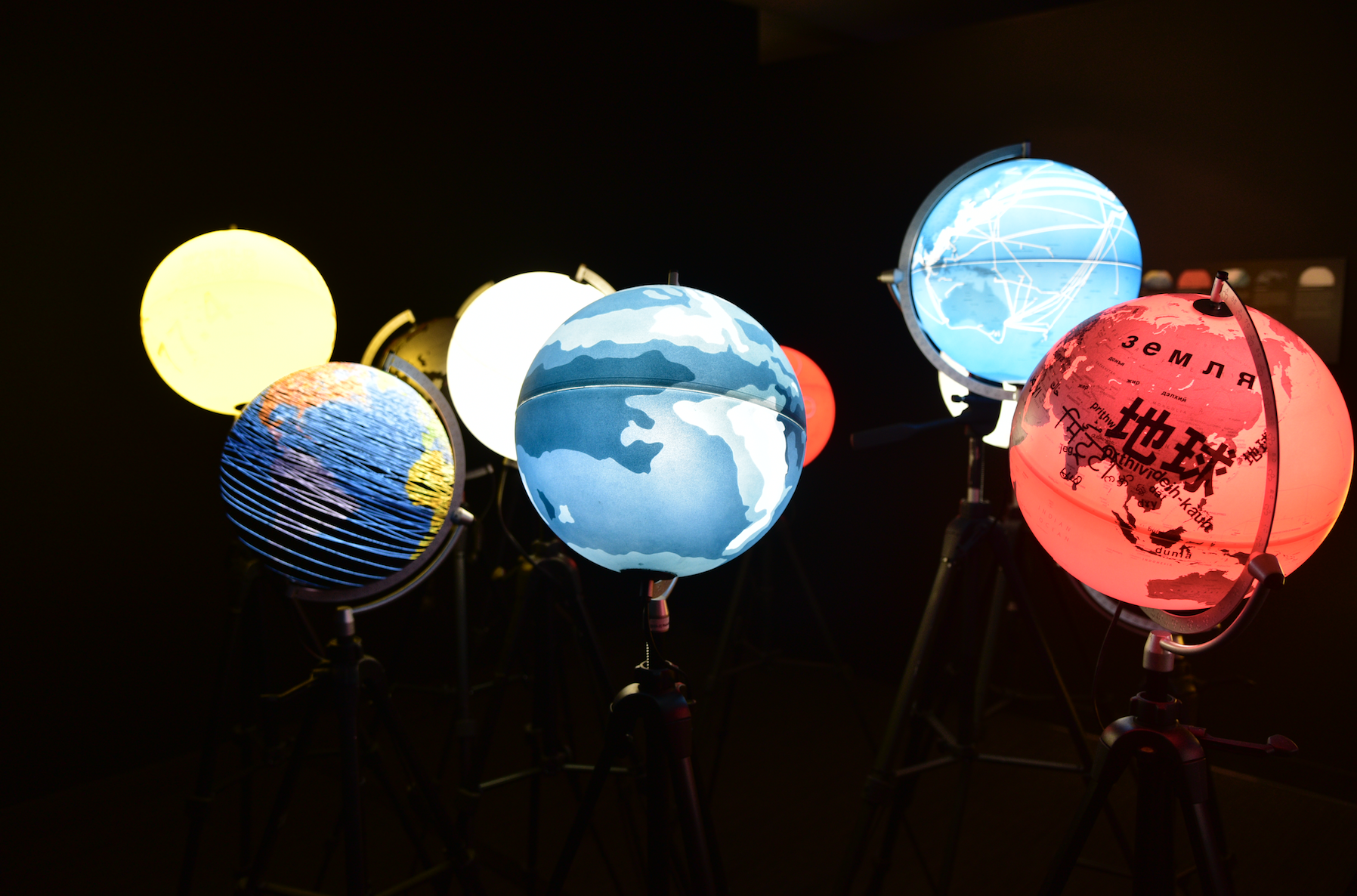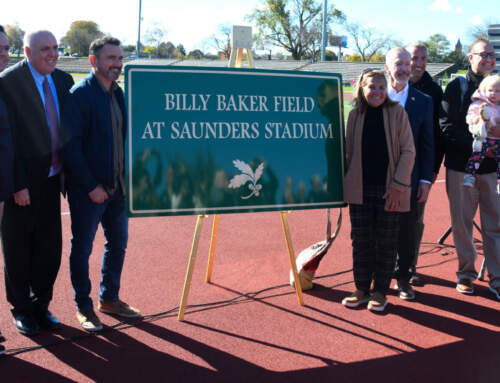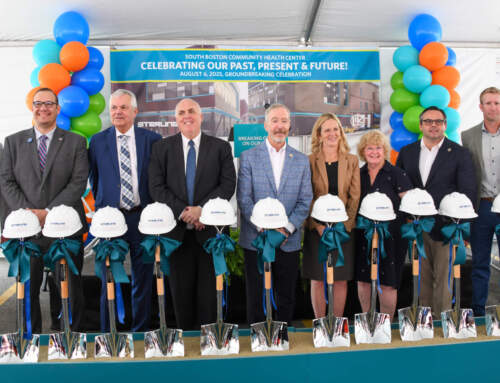By Richard Campbell
After the overview of museums in Boston I decided to cross the river to Cambridge to give science geek nation a glimpse at the MIT Museum’s current exhibits, which span from engineering, big data, to robotics, early modern photography, the hologram room, and a short history of the Polaroid camera. For students engaged in serious cabin fever this is a pretty cheap way (10 bucks) to explore vast worlds of science.
First stop was the main exhibit on Gestural Engineering. What is that? I thought you’d never ask! They are more or less engineer projects that evoke emotions through movement. This quirky kind of kinetic sculptures by Arthur Ganson are Tim Burton like mechanical machines that appear to have minds of their own. You can start and stop the actions of the sculptures by pressing on the foot pedals connected to the displays. Some of them look like factory made contraptions from the 19th century, others look like modern sculpture. The artist/engineer is quoted as saying: “With all these pieces you don’t have to know anything. Everything you feel about them is true for you.” They explore motion, and create an unusual sensory experience- kind of like a house of games.
Next stop was the Robots and Beyond display. As most people from this area know, MIT more or less cornered the robot market for years, pioneering in AI-artificial intelligence and cybernetics, with the first computer lab back in the technology stone age of 1959. When you first enter the gallery you are greeted by the giant imposing Tallchief, (named after the ballet dancer Maria Tallchief), a robot that incorporates motions and torque. Built by Sarcos Inc. for NASA it was lent to MIT to design spacesuits in 2003 that would allow increased mobility. You can see all the details of this seven-foot robot’s working parts and its incredible complexity.
The robotic dinosaur “Troody” modeled after the dinosaur Troodon Formosus from the Cretaceous period, is a walking dinosaur built by Peter Dilworth at MIT. It has a see through body that has a complex control system that allows it to navigate terrain. The LEGO Mindstorms NXT looks very much like what you’d get in a toy store, but is a real programmable robot that has its own programming environment. Middle school and high school students can book a workshop that includes a guided tour of the gallery and the opportunity to test out the NXT programming environment. Even more engrossing is the Marvin Minsky arm, an early project of the MIT AI Lab. It reminded me immediately of the primitive robot in the movie Hugo. It was such inventions that lead to breakthroughs in cybernetics- or the study of intelligent behavior of machines to perform goals, programmed by computers and with video cameras. These machines could build things like build houses with children’s blocks. By today’s standards such feats might seem rather primitive next to robots in current day factories and labs- but realize this ground breaking work was done in the late 1960’s and early 1970’s.
Once we zoom ahead in time and find ourselves in 1994 in front of Robo Tuna, the future is well, practically now. This large swimming mechanical tuna lead to the ability to design AUV’s or autonomous underwater vehicles. There was a video of actor Alan Alda swimming around with the Robo Tuna that is quite clever. The idea was beginning to form that one could in fact teach machines to think like humans, (true AI) rather than merely replicate motions or perform functions. In 1993 the former director of MIT’s AI Lab, Rodney Brooks (also one of iRobot’s founders) invented the super sophisticated robot Cog. Cog not only had arms and legs and a torso, but eyes that could see via cameras, and a built in hearing device. I was disappointed that KISMET which followed Cog, which was supposed to be a robot that could understand and respond to emotions, was locked motionless. Created by MIT professor Cynthia Breazeal, a protégé of Brooks, it seems to have a cuddly side we don’t normally associate with robots- kind of the way Steven Spielberg thinks about these things.
After all the robots you might find stepping back in time to photography in the 1930’s a little underwhelming, but the processes involved in the images of Hungarian born artist Gyorgy Kepes set a lot in motion much of modern architecture and design. His photograms, or photography made without a camera by placing objects on sensitive paper and illuminating them, have an austere abstract quality. He not only worked in photography, but also in architecture, stage design, film, and was an influential member in the famous new art school of Chicago, as well as a professor at the School of Architecture and Planning at MIT. Some of his photography is playful, some of it is a little disturbing. The people he worked with are like a who’s who of twentieth century scientists, artists, thinkers and designers. When you google his name you will only see 389,000 results- you get the picture. Speaking of which, for a limited time the Hologram room is still open, where you can see some of the early holograms and the complex process for creating them.
When one starts looking closely at the MIT Museum it seems like a pretty down to earth place, but as you dig deeper, the science starts to grow in magnitude. Nothing demonstrates the difficulty of explaining the enormity of the technological world we live in better than the Big Data Exhibit. Basically, a host of world data, and its ramifications for mankind can be explored. Perhaps you don’t want to know how much of our world is controlled by technology, or you might find it fascinating. Consider the weirdest idea of all: the display Strange Visions are sculptures of human faces created from DNA that the artist Heather Dewey Hagborg plucked from random chewing gum and objects she found. It’s supposed to cue us up to the idea that having genetic control might not be the most wonderful idea. Certainly scared me! In the realm of visual complexity, the globes that were created in what I termed the glow room were much more soothing, and the flight patterns graphic really had a cool neural feel to it. The rest of the Big Data presentation involved searching out world maps for things like the underground fiber optic cables that run around the globe, or how scientists can use sewer systems to monitor biological and chemical properties in different locals.
I have covered the high points of the current exhibits, and like any museum they change with the seasons… but wait there’s more! There’s a gift shop in the museum with all sorts of games and quirky devices, and down the street from the MIT Museum towards central square is the MIT bookstore, which has heavily discounted original books from MIT press. All this and more is conveniently located right outside of Central Square on Mass Ave. So, students, if you haven’t been to the MIT Museum, get your geek on and start the New Year right! For more information, go to: https://mitmuseum.mit.edu/
